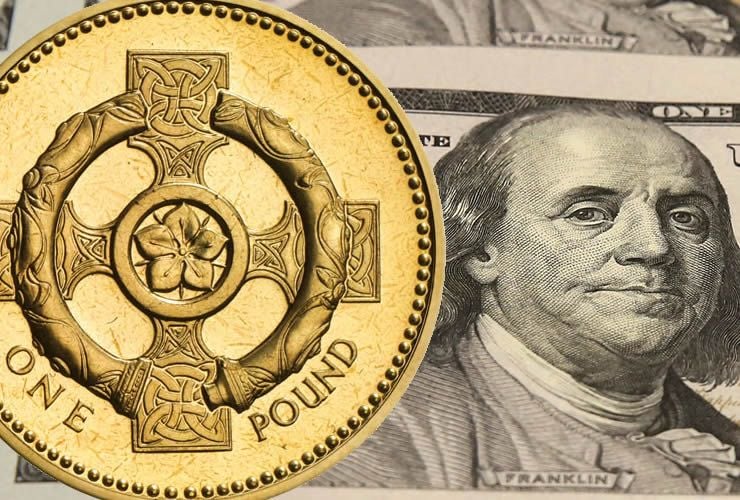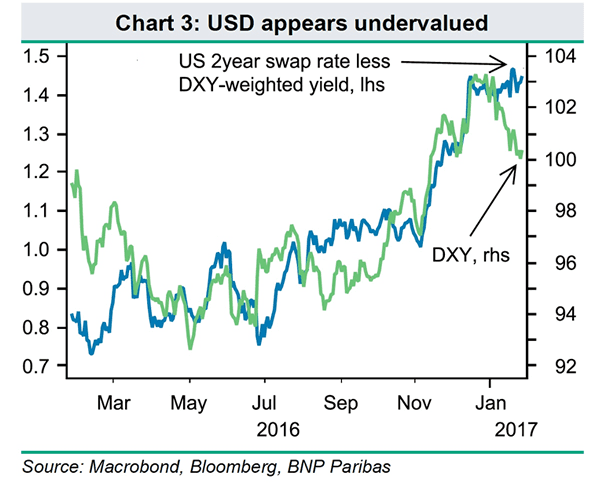Expect more Pound / Dollar Strength as Deeper USD Correction Unfolds: UniCredit
- Written by: Gary Howes

Pound Sterling has been gifted a road to recovery on signs that the US President will be making it unclear that Germany is gaining an unfair trade advantage over the United States thanks to the use of its chronically undervalued Euro.
The Dollar fell sharply and the Euro and Pound jumped after Donald Trump’s trade adviser, Peter Navarro, suggested the Euro was artificially weak, and Germany was gaining an unfair trade advantage as a result.
We note here that Navarro is in fact right to suggest that Germany continues to enjoy an export boom thanks to a currency that is lower than would be expected for such a strong economy.
And the market reaction to the comments suggest others agree.
"The comments from Donald Trump’s team will irk Angela Merkel’s Germany. The truth hurts. It’s well understood that the euro is weaker than the Deutsche Mark and stronger than the Spanish peseta or Greek drachma would have been, which tilts trade in favour of the more industrious Germany," says Jasper Lawler at CMC Markets.
This is the latest intervention in matters of foreign exchange by a senior US figure as Navarro's comments reflect Treasury Secretary Mnuchin's comments that the US Dollar is “too strong”.
The sudden reversal in fortunes for the US Dollar allowed Sterling to quickly step into the breach and reclaim some of its lost ground, rising to 1.2580.
It looks as though a technical base in GBP/USD is being formed at 1.25 and the Pound could remain bid above here.
Dollar Forecast to Fall Further
The jawboning from senior US officials opens up a new frontline for the Dollar which must now surely absorb some element of political risk.
“A politically-driven risk premium has sneaked into USD valuations, as investors have digested the new US administration's actions and rhetoric on trade,” says Hans Redeker, analyst at Morgan Stanley.
If we look at the following graphic we can see the US Dollar (DXY) has detached from interest rate drivers which are a traditional determinant of value:
This, argues Redeker, is caused by a political risk premium. Redeker believes that ultimately the Dollar will recover as Trump policy on trade will command a stronger currency.
However, Dr. Vasileios Gkionakis, Global Head of FX Strategy at UniCredit Research believes the recent political rhetoric on the Euro being “grossly undervalued” is now acting as an additional headwind for the Dollar:
"We have little doubt that political high-pitched rhetoric will continue inducing volatility in the exchange-rate market. But we think that price developments so far this year, together with investors realizing that there has to be a significant risk premium priced into the USD and the recent noteworthy shift towards a 'weak Dollar policy' suggest that the risks for a deeper (than we initially expected) correction lower in the US currency are increasing."
However, there remains a good portion of the research community that reckons it is still too soon to call the end of the Dollar's long-term rally.
Analyst Shaun Osborne at Scotiabank observes that the primary supports for the USD – wide yield differentials across the curve and more solid growth prospects – remain intact, regardless of current uncertainties surrounding the new administration’s short-term policy priorities.
"Despite the USD setback in recent weeks (top chart), we think underlying fundamentals remain positive. Although we concede that the risk of more, near-term corrective weakness in the big dollar cannot be excluded, we still rather think that USD dips are a buying opportunity," says Osborne.
Despite Scotiabank's fundamental view on the Dollar remaining bullish, Osborne concedes that the GBP/USD exchange rate is likely to extend higher.
Osborne's bullish stance on the exchange rate sees 1.27 being tested in the short-run.
However, analysts observe strong resistance at 1.2670/75 which represents last week’s high.
Stronger resistance lies a cent higher at 1.2770/75, the late 2016 high.






